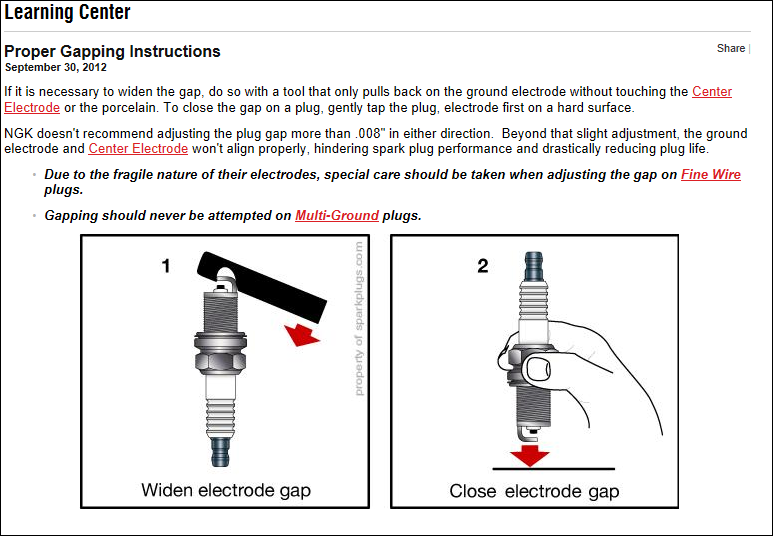I've done searches here and on other forums including a global search on Google but I can't seem to find the answer as to how to gap, or if I have to, the plugs for my 07 HPDI 250. My engine info is:
Yamaha 60X
VZ250TLR
L
1004853
J
01/07
I looked in the Yamaha manual and it states:
Spark plug (NGK): BKR6EKU
Spark plug gap:
1.5–1.6 mm (0.059–0.063 in)
What I can't find is how to gap the plugs are they have non-standard tips, one on each side of the plug.
If it's obvious and I missed something I give permission to hit me over the head with a cast iron frying pan. Thanks in advance.
Yamaha 60X
VZ250TLR
L
1004853
J
01/07
I looked in the Yamaha manual and it states:
Spark plug (NGK): BKR6EKU
Spark plug gap:
1.5–1.6 mm (0.059–0.063 in)
What I can't find is how to gap the plugs are they have non-standard tips, one on each side of the plug.
If it's obvious and I missed something I give permission to hit me over the head with a cast iron frying pan. Thanks in advance.




Comment